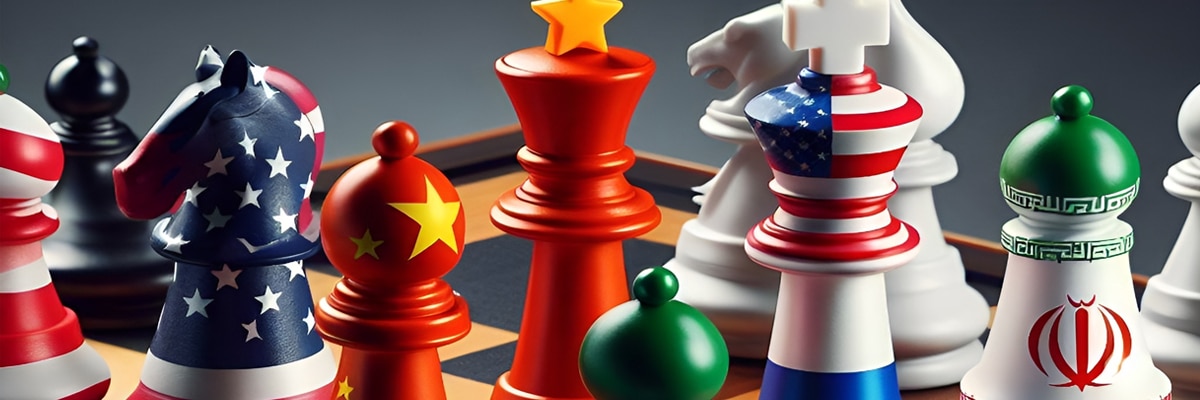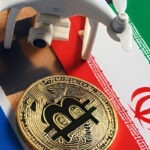The war in Ukraine, the tension in the Essequibo, the regionalization of the war in the Holy Land and the North Korean artillery fire at the height of one of the last remnants of the Cold War, the 38th parallel, are the most manifest and violent expressions of the worsening competition between great powers, which for some years now has entered a high-tension phase that sees the peripheries of the international system at the center of the clash of blocs.
In many of the theaters of crisis that are overloading the attentive and responsive capacities of the United States, a hegemonic power but grappling with a problem of imperial overextension, it is often possible to glimpse the longa manus of the duo turned trio: the Moscow-Beijing-Tehran coalition. Wary of each other but unable to challenge the United States alone, the three advocates of overhauling the international system, which they would like to transform from unipolar to multipolar, have demonstrated how exceptional the destabilizing potential of their union is on multiple occasions and places.
Assuming that the U.S. will continue to pursue the onerous path of multiple containment, the strategy for navigating global disorder that seems to have prevailed over all others - despite the contrary opinion of diplomatic veterans such as the late Henry Kissinger - it is likely and predictable to expect from the triad of multipolar transition an increased reliance on multilevel concert. To produce explosive polycrises. With destination the transition from the creaking unipolar order to a multipolar one.
From polycrises to permacrisis
Russia and China are acting in concert in an oplitic pattern - one side covering and supporting the attack of the other - in an increasing number of theaters. Iran, wounded but not defeated by the Trump presidency's maximum pressure strategy, has returned to assertiveness in the Middle East. All three, from the plains of Ukraine to the waters of the Red Sea, are working to multiply their firepower and burden the United States with keeping the waning unipolar moment alive.
From Russia's campaign in Ukraine fought with Iranian military drones and Chinese munitions to Venezuela's maneuvers in the Essequibo co-scripted by Vladimir Putin and Xi Jinping, via the waters of the Red Sea that are choppy for all but Russian - or Chinese - flagged merchant vessels, against the backdrop of the gloomy triangulations between Gaza and the Moscow-Beijing-Tehran bloc that made Hamas's war in the Holy Land possible - as illustrated by analyst Elham Makdoum in our columns - everything seems to indicate that the Russians, Chinese and Iranians are betting on producing a "distributed permacrisis"-so many crises simultaneously at multiple points-to stress and saturate the attentive and responsive capabilities of the United States.
Permacrisis. This will be the word of 2024 and the years to come, which will see worsening competition among great powers and increased use by Russia, China and Iran of their subsidiary (proxy) forces, which, reeling from a decade of exhausting pressure and wearing defenses, are now finding increasing use as propagators of productive anarchy. The blowback from the failed policies of the United States and allies in the Middle East and Eurasian environs.
Iranian proxies have demonstrated their ability to selectively close the West Indian-Red Sea route to traffic to and from Europe and Israel: pirated Western ships, undisturbed Russian and Chinese vessels. Impossible to ignore the geo-economic implications in prospect of an Axis of Resistance mobilized in its entirety: value chains from security with variable geometry and with selection at entry. Not forgetting that the same Axis, often described as an Arab-Mesopotamian reality, has global spread: Hamas and Hezbollah possess thousands of agents in Latin America, Western Europe and Africa.
Russian and Chinese satellites and proxies have proven that they can stress the United States and its allies inside and outside the Middle East, as recalled by the controlled demolition of Françafrique by Wagnerites operating in the Sahel, the ticking tensions in Venezuela-Guyana, the reopening of signal intelligence bases in Cuba, and North Korea's periodic displays of force meant to be a reminder to the United States: Russia and China are not alone in the Western Pacific.
World warfare in the straits of globalization
Iran, acting through the Houthis, has caused an extraordinary shift in commercial maritime traffic from the Indian-Red Sea route, via the Bab el-Mandeb Strait and Suez Canal, to the Cape route of four-hundred-year-old memory. Outstanding victims of this attack on globalization are European, as well as Israeli, distributors and consumers, already hit by the price hikes that began with the COVID19 pandemic and continued with the war in Ukraine.
The emergence of a huge no go zone from the West Indian to the Red Sea, apparently traversable only by Russian, Iranian and Chinese ships, may be just the beginning, the technical proof, of the global war for the straits of globalization.
The next two straits that could be swallowed up by the vortex of competition between great powers are Malacca and Panama. Malacca is to Beijing what Panama is to Washington: if open to traffic, it is a source of tranquility (and wealth); if closed, it can cause very serious economic asphyxiation.
China's strategy for Malacca has taken two forms: development of alternative routes to circumvent it in case of closure, including by road and rail, and courtship of non-aligned but anti-American Indonesia via BRICS+. Panama, however, is a more complicated issue.
Talking about Panama as a Chinese satellite is not yet possible, but multisectoral cooperation, now expanded to include military affairs, has received an extraordinary boost in recent years. China is trying to befriend Panama, aided by the anti-Americanism ingrained in the small country's society and politics, with the aim of becoming the shadow-owner of its strategic infrastructure, including the infamous canal through which 40 percent of all containers entering and leaving the United States pass. Beijing's forbidden dream is a Suez crisis in Panamanian sauce. For now it is political fantasy, tomorrow who knows.
If Panama for now is a strategic partner of China, and nothing more, different discourse must be made for Daniel Ortega's Nicaragua: a government made up of Sandinista veterans, security contracted out to wagnerites and 007s of the GRU, facilities even rented to Hezbollah agents. From here China fled in 2014-15, after the Obama presidency tried the hybrid war card to bring down the government, guilty of granting Mandarin investors the right to build a pharaonic canal designed to be the anti-Panama. Instability would result in the death of the investment, deemed excessively risky by Beijing, but it did not drive Moscow away. Which decided to stand by the ancient ally, sending it counterinsurgency specialists to deal with the near-civil war.
Today Managua is still in crisis, Orteguism lives on the edge, but the (substantial) difference from the past is that the government can count on Russian, Iranian and returning Chinese support, landed there again after Nicaraguan adherence to the one-China policy. Accession strongly desired by Ortega. Perhaps in order to convince Xi that the canal, which could give Beijing the keys to the two oceans, s'hava to be done. What is certain is that, from the Caribbean Sea to the Red Sea, it will be permacrisis at the edges of the American Empire.
Geopolitical analyst, foreign policy consultant and author. Graduate in Area and global studies for international cooperation (University of Turin), educated between Italy, Poland, Portugal and Russia. Specialized in hybrid warfare, Latin American issues and post-Soviet space.









Scrivi un commento